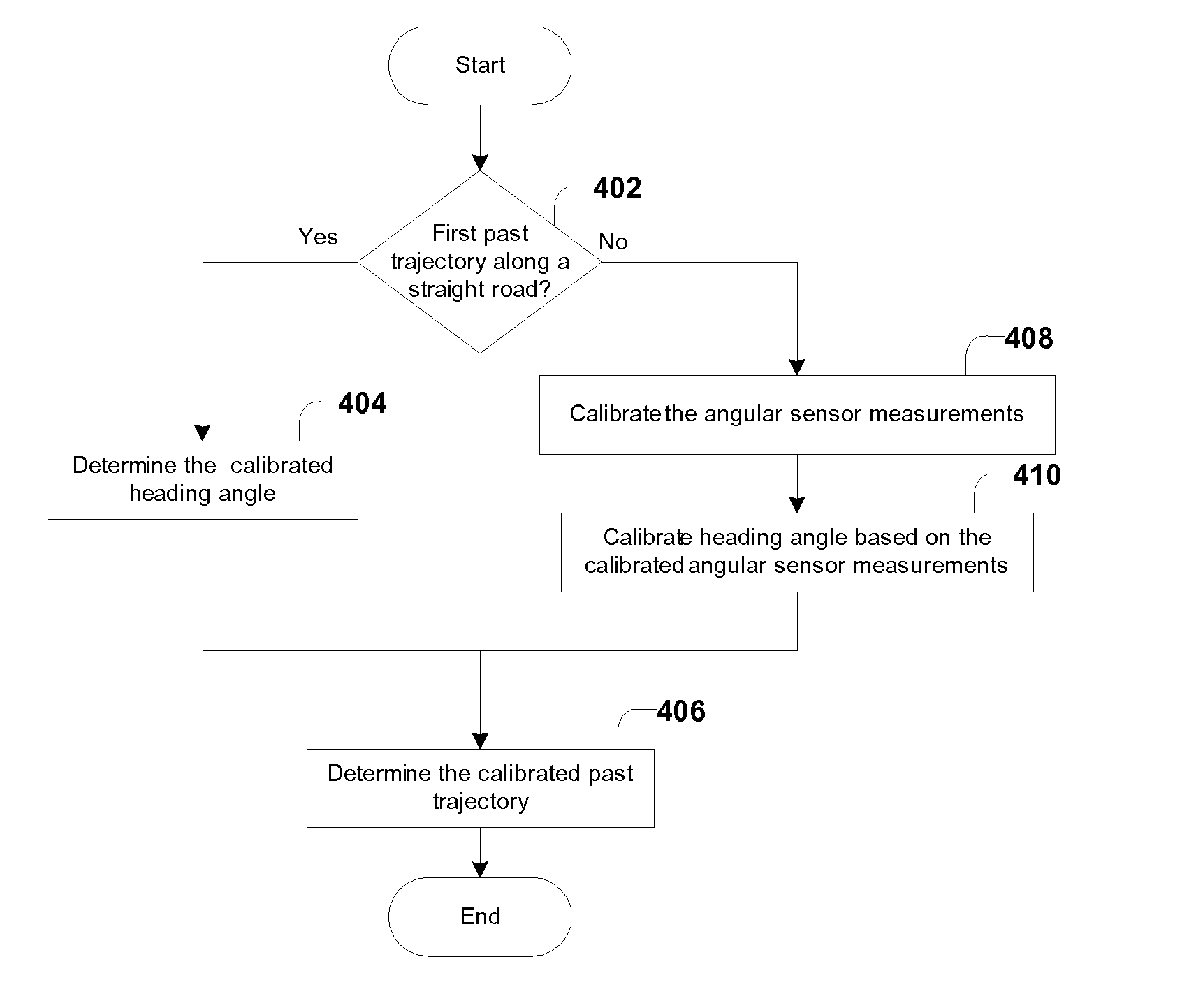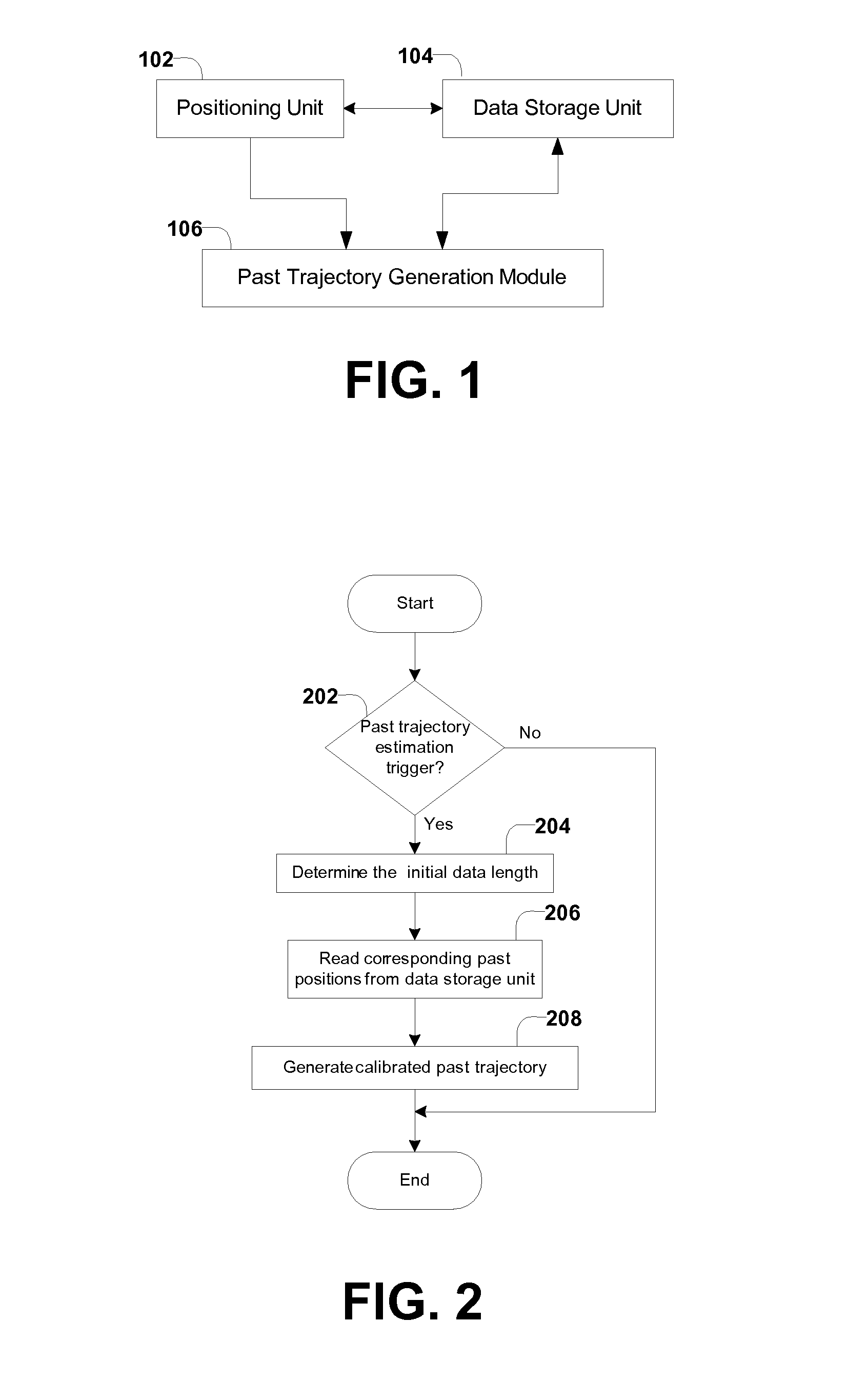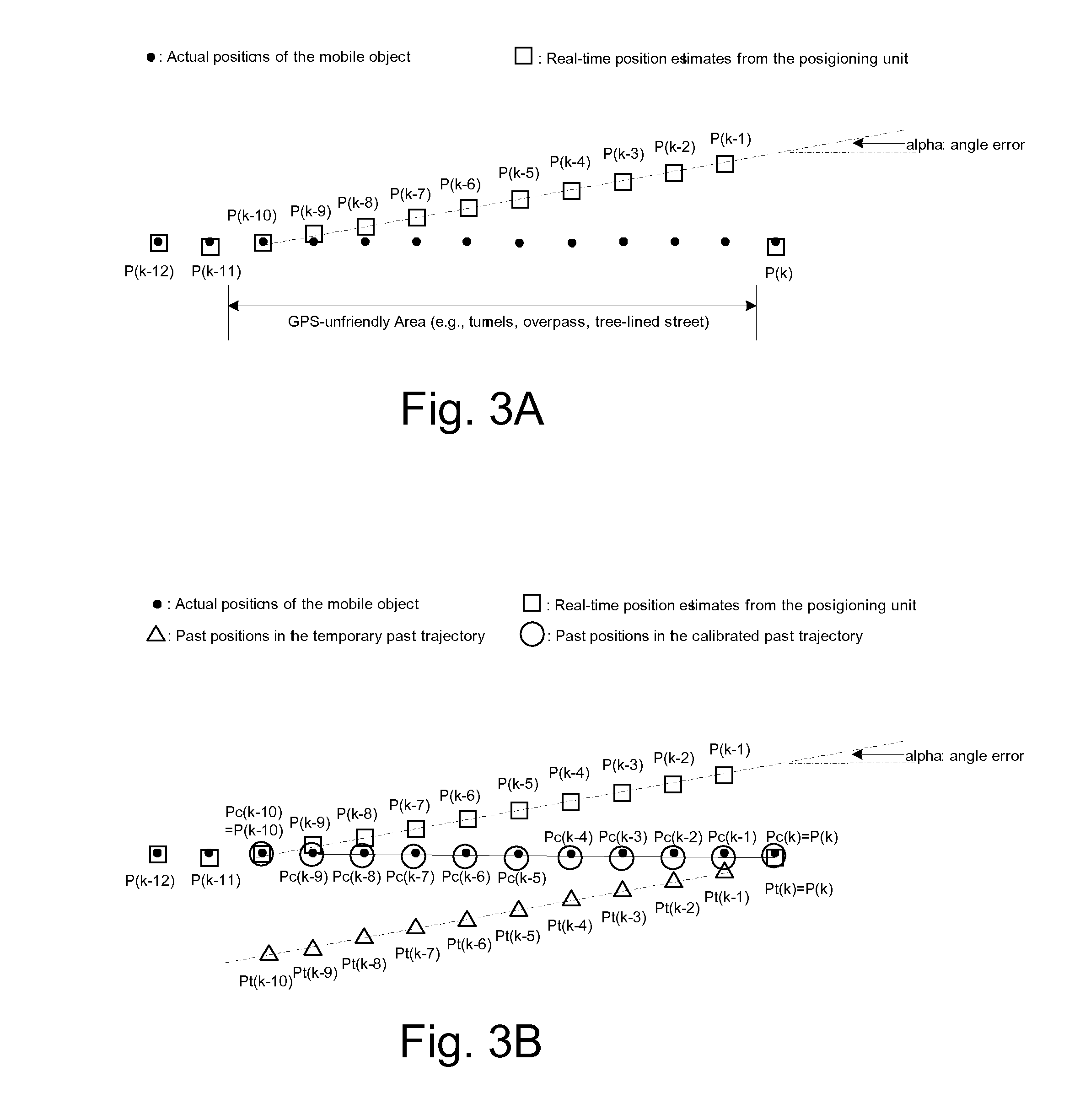Automatic correction of past position errors for location and inventory tracking
a technology for location and inventory tracking, applied in surveying, navigation, instruments, etc., can solve the problems of not having the capability to improve the accuracy of previous position estimates, and the system and method of the present application are also differen
- Summary
- Abstract
- Description
- Claims
- Application Information
AI Technical Summary
Benefits of technology
Problems solved by technology
Method used
Image
Examples
first embodiment
[0047]FIG. 1 shows the system configuration of the position tracking system. In this embodiment, the position tracking system includes a positioning unit 102, a data storage unit 104, and a past trajectory generation module 106.
[0048]The positioning unit 102 provides real-time position estimates of a mobile object, where the real-time position estimates are determined based on the measurements up to the time that these position data are referenced. The positioning unit 102 can include but is not limited to the following positioning sensors: a single GPS or DGPS, an INS, motion sensors such as yaw rate sensor and / or speed sensor, cameras, radar and LIDAR. The positioning unit 102 could be installed on the mobile object (e.g., when GPS or DGPS, INS, or motion sensors are used), or it could be outside or away from the mobile object (e.g., when cameras, radars, LIDARs, or RTLS are used). The processing techniques involved in such a positioning unit include tightly-coupled GPS / INS integr...
second embodiment
[0066]In a second embodiment with the confidence level available, the combination can incorporate the confidence levels of the position estimates in the first past trajectory. As the temporary past trajectory is generated based on the backward projection model and the most recent position estimate (i.e., Pt(k)=P(k)), the temporary past trajectory has confidence levels associated with P_conf(k) (the confidence level of position estimate P(k)). For example, the confidence level of every temporary past position Pt(i) can be set to be P_conf(k); alternatively, the confidence level of Pt(i) can decrease as (k−i) increases to take into consideration model inaccuracies and uncertainties:
Ptconf(i)=Pconf(k)×γ(k-1), where 0<γ≦1 (e.g. γ=0.95)
[0067]Accordingly, a linear combination of the first past trajectory and the temporary past trajectory can use weighting factors (β(i)) that are functions of both the confidence levels of the first past trajectory and the confidence levels of the second pa...
third embodiment
[0069]In a third embodiment with the confidence level available, the first past trajectory can be further evaluated and portions of first past trajectory can be selected based on its corresponding confidence levels. Take an example where n=Lmin=20 and let's assume that, in the first past trajectory [P(k), P(k−1), . . . , P(i), . . . , P(k−n)], only [P(k), P(k−1)], [P(k−5), P(k−6), P(k−7)], P(k−10), [P(k−14), P(k−15)], and [P(k−19), P(k−20)] have confidence levels higher than a pre-defined threshold. Thus, only these first position estimates are selected to be used in the combination to generate the calibrated past trajectory. That is, if P(i) is among the selected first position estimates, the corresponding position in the calibrated past trajectory, Pc(i) is computed as: Pc(i)=β(i)×P(i)+(1β(i)×Pt(i)); if P(i) is not among the selected first position estimates (that is, P(i) has a confidence level lower than the pre-defined threshold), Pc(i) is simply set to be the Pt(i): Pc(i)=Pt(i...
PUM
 Login to View More
Login to View More Abstract
Description
Claims
Application Information
 Login to View More
Login to View More - R&D
- Intellectual Property
- Life Sciences
- Materials
- Tech Scout
- Unparalleled Data Quality
- Higher Quality Content
- 60% Fewer Hallucinations
Browse by: Latest US Patents, China's latest patents, Technical Efficacy Thesaurus, Application Domain, Technology Topic, Popular Technical Reports.
© 2025 PatSnap. All rights reserved.Legal|Privacy policy|Modern Slavery Act Transparency Statement|Sitemap|About US| Contact US: help@patsnap.com



